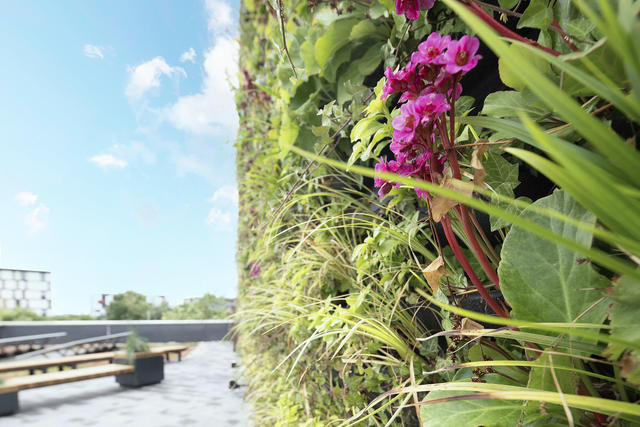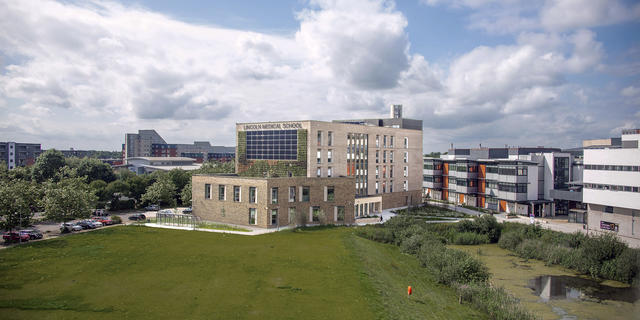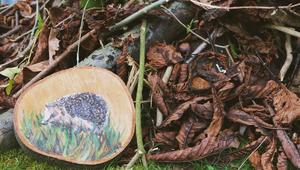The University of Lincoln’s new Medical Sciences Building was completed in March 2021 and aimed to be biodiversity positive as a build. To achieve this, a 120m2 Living Wall was designed into the building, containing over 5000 plants (of 15 varieties) to provide valuable food for pollinators and birds throughout the year. The external landscaping involved the establishment of wildflower meadows to support pollinators and wildlife.
Name of the Organisation:
University of Lincoln
Type of case Study:
Business and Sustainability
Please outline the project and how it includes sustainability / low carbon principles?
The Lincoln Medical School Building, completed in 2021, is the most sustainable building across the University's estate, featuring solar panels on the roof and front of the building. It also features a 'living wall', consisting of 15 varieties of plants. Living walls can help insulate buildings, aid biodiversity locally, and benefit the mental health of staff and students. The landscaping around the building has been reseeded with grass seed and wildflowers, which, once established, will support our campus wildlife, including birds, bees, and small mammals such as hedgehogs.
The building has been extensively energy modelled to ensure that the equipment running the heating, cooling, and ventilation takes into account how our university buildings are used. This includes seasonal changes such as term time teaching, maximising natural ventilation to reduce the requirement of mechanical ventilation. Daylight dimming is also in place in many areas of the lighting across the building — when natural daylight levels are high enough, the lighting inside the building will adjust to suit or switch off altogether.

The building is also fully run on electricity as the grid is naturally being de-carbonised. The building is extensively energy metered and our Estates team have support from a consultant for the next 3 years in monitoring the energy use in spaces and working with the building users to improve this where possible.
What benefits have you seen as a result of measures taken?
A greater variety and amount of pollinators have been seen in the dedicated wildflower meadows; which are also supporting Goldfinches, Starlings, Sparrows and Grey Wagtails, as well as our native hedgehogs. The living wall has been positively received by staff, students and members of the public alike.
The build itself has won awards in Sustainable Design regionally, raising the profile of sustainable buildings. It is the most energy efficient building on our estate.

How do you think this could be replicated across Lincoln?
Businesses should liaise with their architects to incorporate sustainable design as a core principle of their future projects.
Is there any further information you would like to share/include?
https://estates.lincoln.ac.uk/sustainability/
Facebook: @uolenvironment
We're interested in sharing success stories and case studies across Lincolnshire. If you have a project, community or business initiative, or are just doing something to benefit the environment personally, please do get in touch. You can email us at lincolnclimatecommission@gmail.com.





